 Chemists use free radicals to produce polymers strong enough to encapsulate drugs while remaining degradable.
Chemists use free radicals to produce polymers strong enough to encapsulate drugs while remaining degradable.
Tuesday, April 2, 2019
Radical steps toward clean encapsulation
 Chemists use free radicals to produce polymers strong enough to encapsulate drugs while remaining degradable.
Chemists use free radicals to produce polymers strong enough to encapsulate drugs while remaining degradable.
Right combination of crystal grains makes superior shape memory alloys
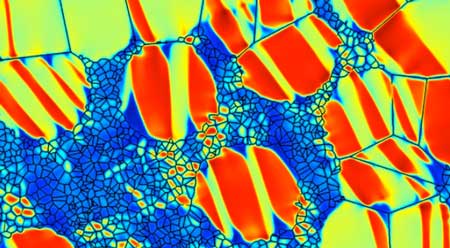 Researchers have shown, through a supercomputer simulation, that high strength and shape memory can be realized at the same time by combining crystal grains of different sizes, a feat previously thought impossible.
Researchers have shown, through a supercomputer simulation, that high strength and shape memory can be realized at the same time by combining crystal grains of different sizes, a feat previously thought impossible.
Smart liquid goes dark in the heat
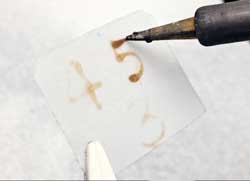 Nanowires that form and disperse as the temperature changes form the basis of a robust thermochromic liquid.
Nanowires that form and disperse as the temperature changes form the basis of a robust thermochromic liquid.
Shape-changing plane wing
 Assembled from tiny identical pieces, the wing could enable lighter, more energy-efficient aircraft designs.
Assembled from tiny identical pieces, the wing could enable lighter, more energy-efficient aircraft designs.
New plastic films deflect or trap heat with zero energy required
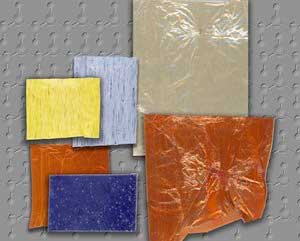 Adaptable films show promise for use in buildings, wearables, camouflage and solar.
Adaptable films show promise for use in buildings, wearables, camouflage and solar.
Detecting minute levels of disease with a nanotechnology-enhanced biochip
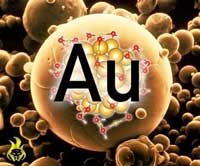 The difficulty in spotting minute amounts of disease circulating in the bloodstream has proven a stumbling block in the detection and treatment of cancers that advance stealthily with few symptoms. With a novel electrochemical biosensing device that identifies the tiniest signals these biomarkers emit, researchers are hoping to bridge this gap.
The difficulty in spotting minute amounts of disease circulating in the bloodstream has proven a stumbling block in the detection and treatment of cancers that advance stealthily with few symptoms. With a novel electrochemical biosensing device that identifies the tiniest signals these biomarkers emit, researchers are hoping to bridge this gap.
Programmable 'Legos' of DNA and protein building blocks create novel 3D cages
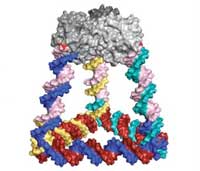 DNA nanotechnology uses DNA molecules as programmable 'Legos' to assemble structures with a control not possible with other molecules.
DNA nanotechnology uses DNA molecules as programmable 'Legos' to assemble structures with a control not possible with other molecules.
Harnessing photonics for at-home disease detection
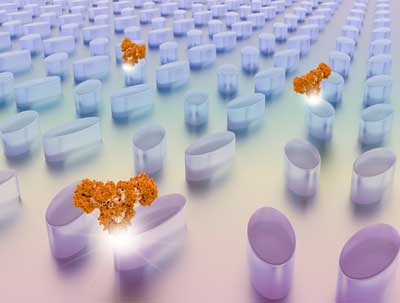 In the not-too-distant future, each of us may have a simple device - small enough for our nightstand or our pocket - that keeps us apprised of our level of health, identifies even trace amounts of undesirable biomarkers in our blood or saliva and serves as an early-warning system for diseases. This is one of the promises of personalized medicine.
In the not-too-distant future, each of us may have a simple device - small enough for our nightstand or our pocket - that keeps us apprised of our level of health, identifies even trace amounts of undesirable biomarkers in our blood or saliva and serves as an early-warning system for diseases. This is one of the promises of personalized medicine.
New record on the growth of graphene single crystals
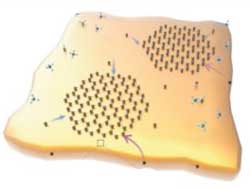 Researchers have explored the rapid growth of large graphene single crystal on liquid Cu based on the liquid metal chemical vapor deposition strategy.
Researchers have explored the rapid growth of large graphene single crystal on liquid Cu based on the liquid metal chemical vapor deposition strategy.
Copper nanoparticle-based alternative for next-generation electronics
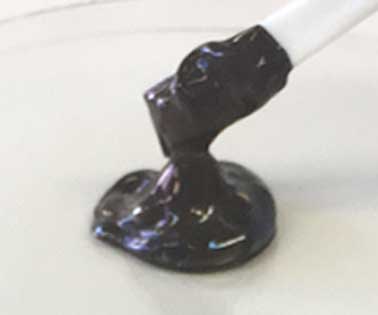 The new medium, made of copper nanoparticles, has promising applications in the production of electronic devices that would otherwise depend on expensive gold and silver counterparts.
The new medium, made of copper nanoparticles, has promising applications in the production of electronic devices that would otherwise depend on expensive gold and silver counterparts.
Scientists capture live, atomic-level detail of nanoparticle formation (w/video)
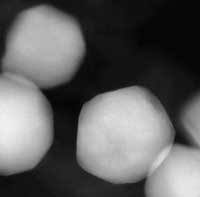 Scientists have achieved real-time atom rearrangement monitoring using aberration-corrected scanning transmission electron microscopy during the synthesis of intermetallic nanoparticles.
Scientists have achieved real-time atom rearrangement monitoring using aberration-corrected scanning transmission electron microscopy during the synthesis of intermetallic nanoparticles.
Subscribe to:
Comments (Atom)
